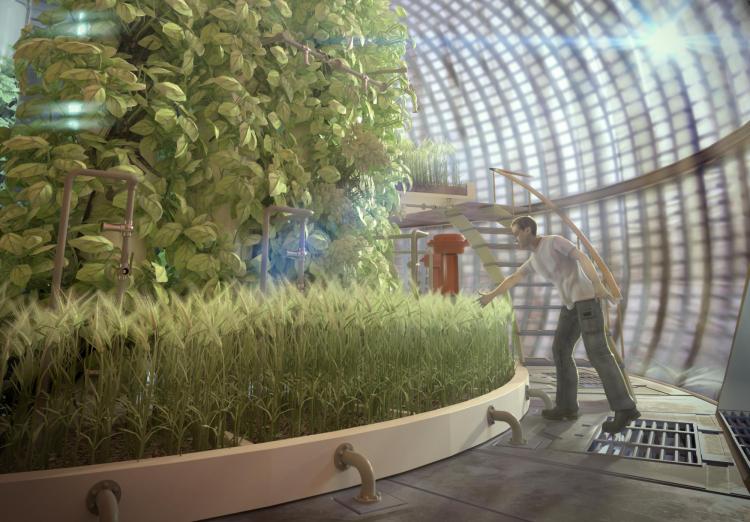All-woman engineering team heads to NASA Mars competition
Team Roster
In addition to CU Boulder, the team includes students at Harvard and Cornell Universities, industry support, as well as a faculty advisor at the University of Hawaii at Manoa.
Students
- Team Leader: Heather Hava (AeroEngr)
- CU Boulder: Sarah Aguasvivas Manzano (CompSci), Kaixin “Kai” Cui (MechEngr), Heeyeon “Sara” Joung (MechEngr), Abby King (ChemBioEngr), Hayley Kinlaw (ArchEngr)
- Harvard University: Larissa Zhou, John A. Paulson School of Engineering and Applied Sciences
- Cornell University: Elizabeth M. Lombardi, Department of Ecology and Evolutionary Biology
Faculty Advisors
- Kyri Baker, Department of Civil, Environmental, and Architectural Engineering, University of Colorado Boulder
- Andy Kaufman, College of Tropical Agriculture and Human Resources, University of Hawaii at Manoa
Industry Advisors
- Steve Bailey, Deep Space Systems
- Adam Burch, Deep Space Systems
Fall Semester Team Members
- Michelle Lin (AeroEngr), Emily Matula (AeroEngr)
Fall Semester Advisor
- Christine Fanchiang (AeroEngr MS'10, PhD'17)

The annual NASA BIG Idea Challenge is set for April 23-24 in Hampton, Virginia; it calls on student groups at universities across the country to develop solutions to vexing space problems. The event changes each year, and the 2019 contest is seeking innovative ideas for the design and operation of a Mars greenhouse.
Supplying reliable and effective food production on the Red Planet will be critical for long-term missions to ensure astronauts are well-fed and to avoid transporting massive amounts of ready-made food from Earth. The competition, however, is about more than just growing crops; student teams are essentially developing an entire ecosystem to operate and thrive on an otherwise dead planet.
“It’s a huge integration challenge,” said Heather Hava, team leader and an aerospace PhD student whose research focuses on space agriculture. “Systems-level thinking for this kind of design is super important. We have to manage human and crop nutrients, water, waste, power, lighting, crew time and a lot of other things that you wouldn’t worry as much about on Earth. For example, tracking how much oxygen does this plant produce and how much CO2 does it absorb?”
In addition, the team is also working to ensure the greenhouse avoids being a significant maintenance commitment for astronauts, who likely would rather focus on exploring the Martian environment.
“There are lots of tasks astronauts don’t have time to do when they’re focusing on research, so automation is important. The greenhouse includes several types of automation to manage plant care tasks, among other unique features” said Kyri Baker, an assistant professor in the Department of Civil, Environmental and Architectural Engineering and the team faculty advisor.
Hava sums it up simply: “They’re not there to be farmers. However, we still want them to have the joy of fresh food and access to nature in an otherwise sterile machine environment of the typical space habitat”
The students are putting the finishing touches on their entry before the final competition, where their written research and physical prototypes will be evaluated by a group of NASA experts. Five universities advanced to the championship and CU Boulder is the only one sending an all-woman team.
“We will be the only all-woman team this year, and I’m 99% sure in the history of the BIG Idea Competition,” said Hava. “It wasn’t intentional. In the beginning, I reached out to people I knew who would be good for the project, and one day we looked around the room and realized we were all women.”
The team is also heavily interdisciplinary, drawing students with majors from across the college, including aerospace, computer science, architectural engineering, chemical and biological engineering, and mechanical engineering.
“It’s been nice to see how the students look at the design problems from differing perspectives. My background is in power systems, and that was my first question: Where is the power coming from? For some of the students, their first thought was, ‘What are the astronauts going to eat?’”
Food production capacity, equipment mass and power are all fully accounted for in the final plan, which outlines a litany of specific crops as part of the overall system and tracks electricity use down to the last watt, with room to spare, something Baker points out is an important consideration.
“You can’t have power needs be too tight. What if equipment gets less efficient as it gets older and starts drawing more electricity? Rated power also has some uncertainty; something may say it uses 700 watts, but there’s a range,” Baker said.
Details about the extensive living systems analysis, along with numerous other aspects of the facility, are being kept under wraps for now; they are among numerous features the team hopes will wow the judges. The goal of the competition is to bring fresh ideas to NASA, as students often tackle issues in ways that longer-tenured engineers would not necessarily consider. It is an issue Hava has seen first-hand in her PhD research.
“The current architecture for space habitats keeps plant growth chambers and human living areas completely separate,” Hava said. “I think that’s a flawed approach. You lose a lot of the benefit to astronaut health and well-being by separating them from the plants; we’ve intentionally designed our system to integrate the human and plant living systems into a symbiotic ecosystem.”


